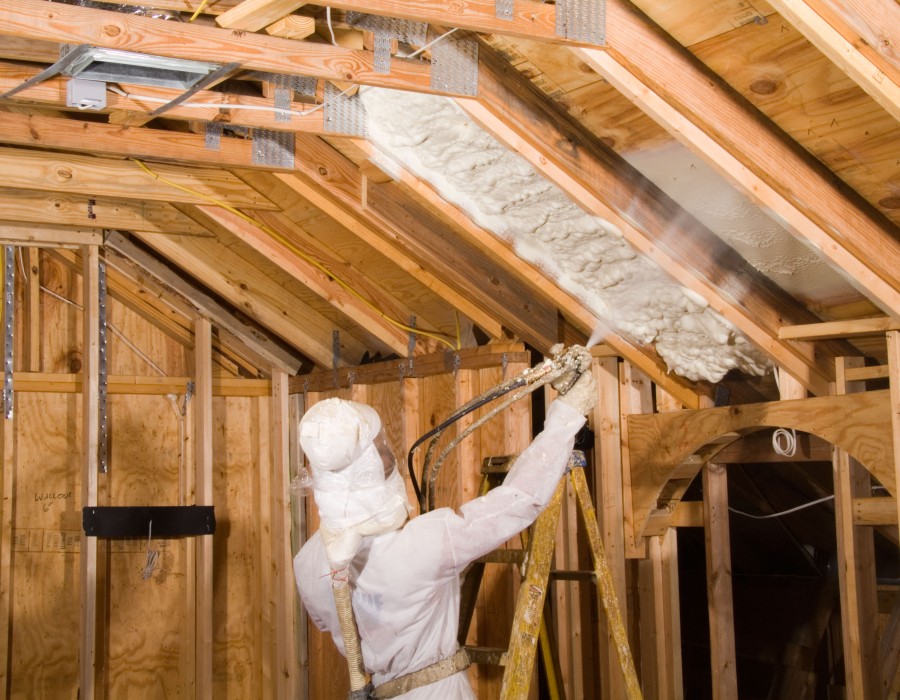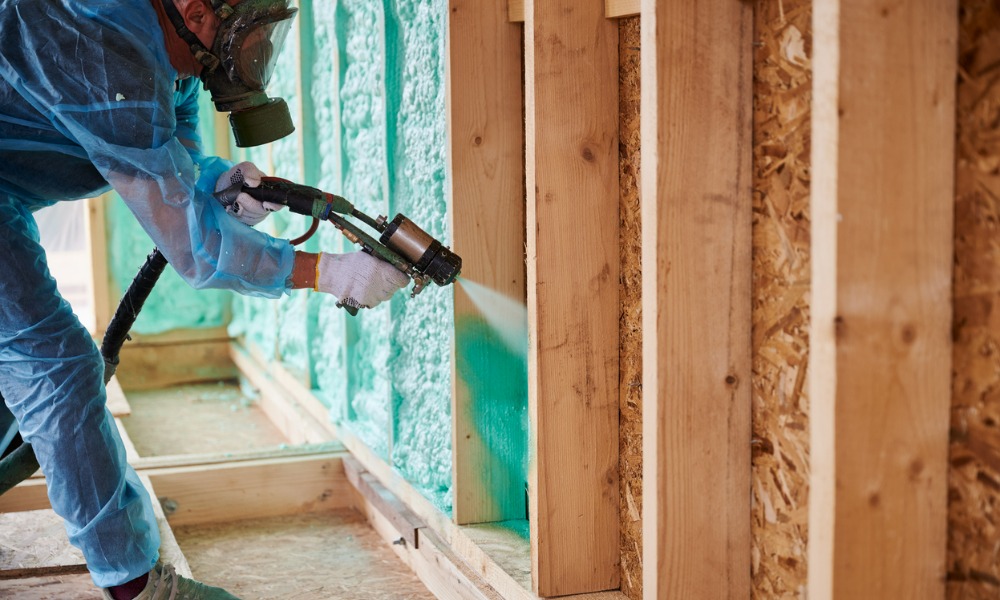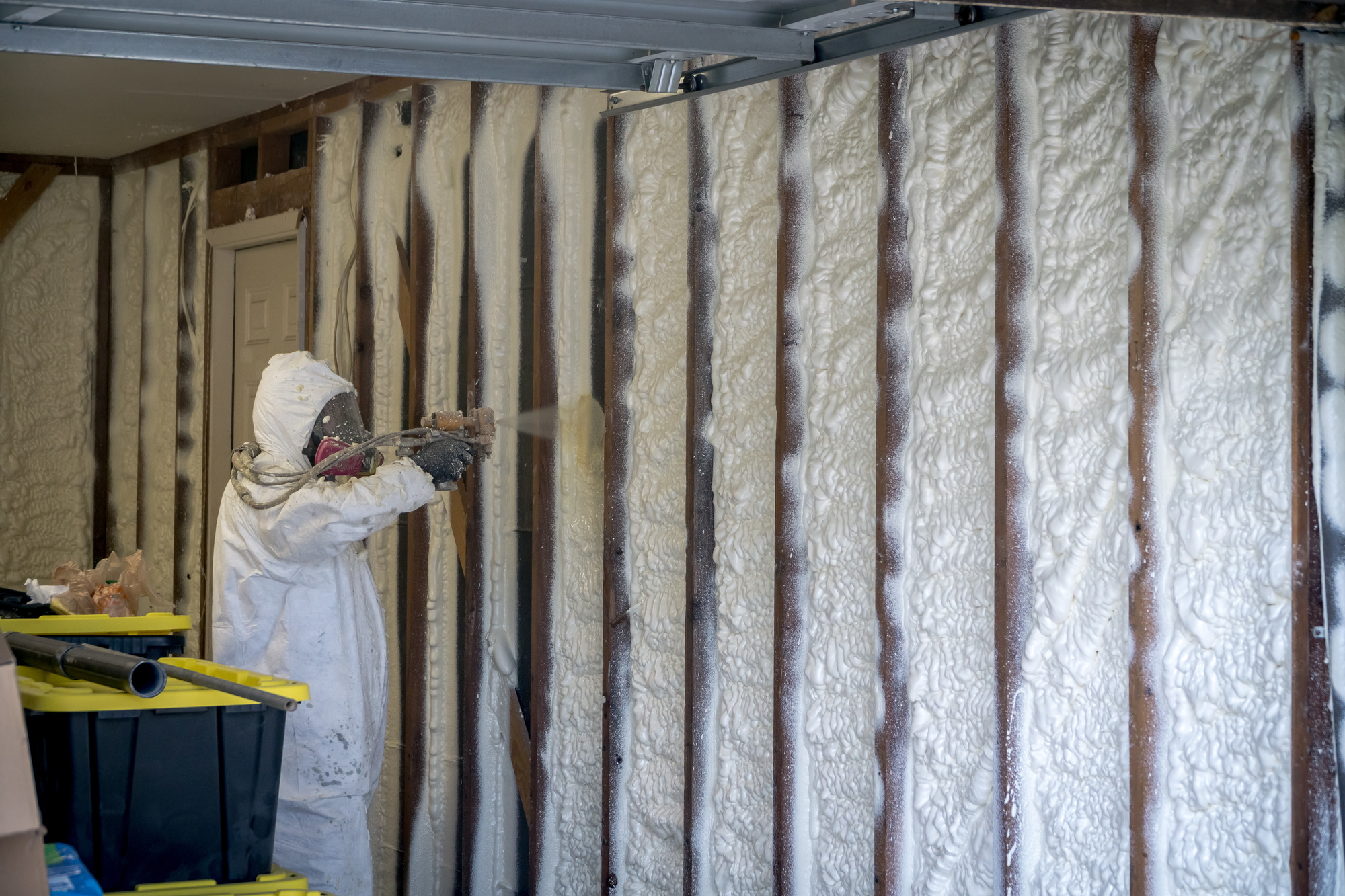Insulation keeps a home at the perfect temperature by acting as a barrier to heat flow. In its simplest terms, it slows down the movement of heat, keeping your home warmer in the winter and cooler in the summer. Heat naturally moves from warmer areas to cooler areas. During a cold Maryland winter, it tries to escape your heated living space. In the summer, it tries to push its way in from the hot outdoors. Effective insulation creates resistance, preventing this transfer and allowing your heating and cooling systems to work far more efficiently.
Modern insulation materials, particularly spray foam, take this a step further by also stopping air leakage. A significant amount of temperature fluctuation inside a house is caused by drafts and uncontrolled air movement. By creating a complete air seal, an expert spray foam insulation company addresses both heat transfer and air infiltration, leading to a much more stable and comfortable indoor environment. This article will explain the straightforward principles behind how insulation works and what homeowners should look for. The information here is based on the day-to-day experience of home performance professionals who find that a home's biggest comfort problems often trace back to simple gaps in attic insulation.
The Science of Heat Flow in Simple Terms
To understand how insulation works, it helps to know the three ways heat moves. Every home deals with all three types of heat transfer, and good insulation is designed to combat them.
Conduction
Conduction is heat transfer through direct contact. Think of how a metal spoon gets hot when you leave it in a cup of coffee. The wood, brick, and drywall of your home's walls and ceilings also conduct heat. Insulation materials are filled with tiny pockets of air or gas that are very poor conductors, which is what slows this process down. The measure of how well insulation resists conductive heat is its R-value.
Convection
Convection is heat transfer through the movement of air or liquid. In a home, this is most commonly felt as drafts. Warm air rises and cool air sinks, creating currents that move heat around. Unsealed gaps and cracks in walls, attics, and crawl spaces allow these currents to carry heated or cooled air right out of the house. This is a major source of energy loss; industry reports suggest that air leakage can account for 25% to 40% of the energy used for heating and cooling a typical home.
Radiation
Radiation is heat traveling in the form of electromagnetic waves. This is the heat you feel from the sun or a hot stovetop from a distance. In a home, the sun's radiant heat can bake the roof in the summer, transferring that heat through the roofing materials into the attic and then down into the living space. Radiant barriers, a type of insulation, are designed to reflect this heat away.
Why Air Sealing is Just as Important as R-Value
For years, R-value was the only metric most people talked about. While it's an important measure of an insulation's ability to resist conduction, it doesn't tell the whole story. A house could be filled with high R-value insulation, but if it has air leaks, it will still be drafty and uncomfortable. It's like wearing a thick wool sweater full of holes on a windy day. The sweater material is warm, but the wind cuts right through it.
This is why a proper spray foam contractor focuses on creating a complete thermal and air barrier. Materials like spray foam excel at this because they expand to fill every crack and gap, stopping air movement entirely. This addresses both conduction and convection at the same time. Homeowners can even spot some of these problem areas themselves; holding a lit stick of incense near a window on a windy day will often reveal a leak if the smoke wavers.
- Stops Drafts: No more cold spots near windows or outlets.
- Reduces HVAC Workload: Your furnace and air conditioner don't have to run as long or as often to maintain the set temperature.
- Improves Indoor Air Quality: By sealing leaks, it prevents dust, pollen, and other pollutants from being pulled into the home from the outside.
Choosing the Right Insulation for the Maryland Climate
Maryland's climate presents a unique challenge. With hot, humid summers and cold, damp winters, insulation here needs to manage both heat and moisture effectively.
In the summer, the primary goal is to stop radiant heat from the sun from getting into the attic and to prevent humid outdoor air from infiltrating the home. In the winter, the focus is on keeping expensive heated air inside while preventing moisture from condensing on cold surfaces inside walls, which can lead to mold.
Comparing Insulation Performance
For a climate like Maryland's, the combined features in closed-cell spray foam make it a highly effective solution, as it provides a high R-value, an air barrier, and a vapor barrier in one application. While other materials can be effective, especially in certain situations or on a tighter budget, this comprehensive approach is particularly well-suited for keeping a home comfortable and dry year-round.
Things to Consider Before Making a Decision
Before choosing an insulation type, homeowners should think about their property's specific needs.
Your Home's Current Condition
Are there specific rooms that are always too hot or too cold? Do you notice significant temperature swings between floors? Identifying the main comfort problems helps target the solution. For instance, a hot second floor is almost always a sign of an under-insulated and poorly sealed attic. To take the guesswork out of the process, a professional energy audit uses tools like blower doors and infrared cameras to give a precise assessment of where a home is losing energy.
Project Scope and Location
The part of the house being insulated matters. Insulating an open attic is a different project than retrofitting existing walls. Attics and crawl spaces are generally easier to access and are great places to use spray foam for a complete seal. For existing walls, injection foam can be installed from the outside with minimal disturbance.
Long-Term Energy Savings
Some insulation types, like spray foam, have a higher upfront cost. However, they also deliver greater energy savings over the life of the home. It's helpful to weigh the initial investment against the potential for lower monthly utility bills and increased home comfort. Many find the return on investment comes quickly.
Questions People Ask About Home Temperature Control
Why is my upstairs always hotter than my downstairs?
This is usually caused by a combination of an under-insulated attic and the "stack effect." Heat from the sun beats down on the roof, turning the attic into an oven. That heat radiates down into the upstairs rooms. At the same time, warm air from the lower level naturally rises, getting trapped on the second floor. Proper attic insulation and air sealing can solve this problem.
Will new insulation help with noise?
Yes, absolutely. Insulation, especially denser types like spray foam and cellulose, is excellent at absorbing sound. It can significantly reduce noise from outside, like traffic, as well as sound transfer between rooms inside the house.
Is it possible to have too much insulation?
While you can't really "over-insulate" from a thermal perspective, it is important that the house can still breathe properly. A very tightly sealed home needs a mechanical ventilation strategy to ensure fresh air exchange and manage indoor humidity levels. A good insulation contractor will discuss this with you.
What is the most important area of a house to insulate?
For most homes, the attic is the single most important place to insulate and air seal. Because heat rises, a huge amount of a home's heating and cooling energy is lost through the ceiling and roof.
How do I know if my current insulation is working?
A visual inspection is a good start. If the insulation in your attic is below the level of the joists, you almost certainly need more. If it looks compressed, damp, or has evidence of pests, it's likely underperforming and may need to be replaced. Uneven temperatures and high energy bills are other clear signs.
Achieving Consistent Comfort
Ultimately, insulation is the single most important feature that determines a home's comfort and energy efficiency. By controlling the flow of heat and air, it creates a stable indoor climate that is less dependent on mechanical heating and cooling. For homeowners, this means lower bills, a more comfortable living space, and a quieter home. The key is to choose the right material for the climate and to ensure it is installed correctly to form a complete thermal and air barrier. Applying these principles to your own home often requires a professional eye to identify the most critical areas for improvement.
Getting an Expert Opinion
For homeowners looking to achieve a more stable indoor temperature, consulting with an insulation professional is a wise step. These specialists can perform a thorough assessment of a home to find the sources of heat loss and air leakage. A local company like Peninsula Insulation can explain the different options and help determine the most effective solution for a property's specific needs. To schedule an evaluation, they can be reached at (410) 770-2624 or by email at [email protected].
Author: Wil Perkins is the founder of Peninsula Insulation and a long-time resident of Easton, Maryland. With a hands-on approach and nearly five years in the insulation business, Wil leads a team known for professional service and quality work. He’s committed to providing best Spray Foam Insulation solutions and lasting results for every project.
Reviewer: Emily Martinez has 12 years of experience in spray foam insulation. She reviewed this article and suggested ways to make the content more useful for contractors looking to grow their customer base.







Comments